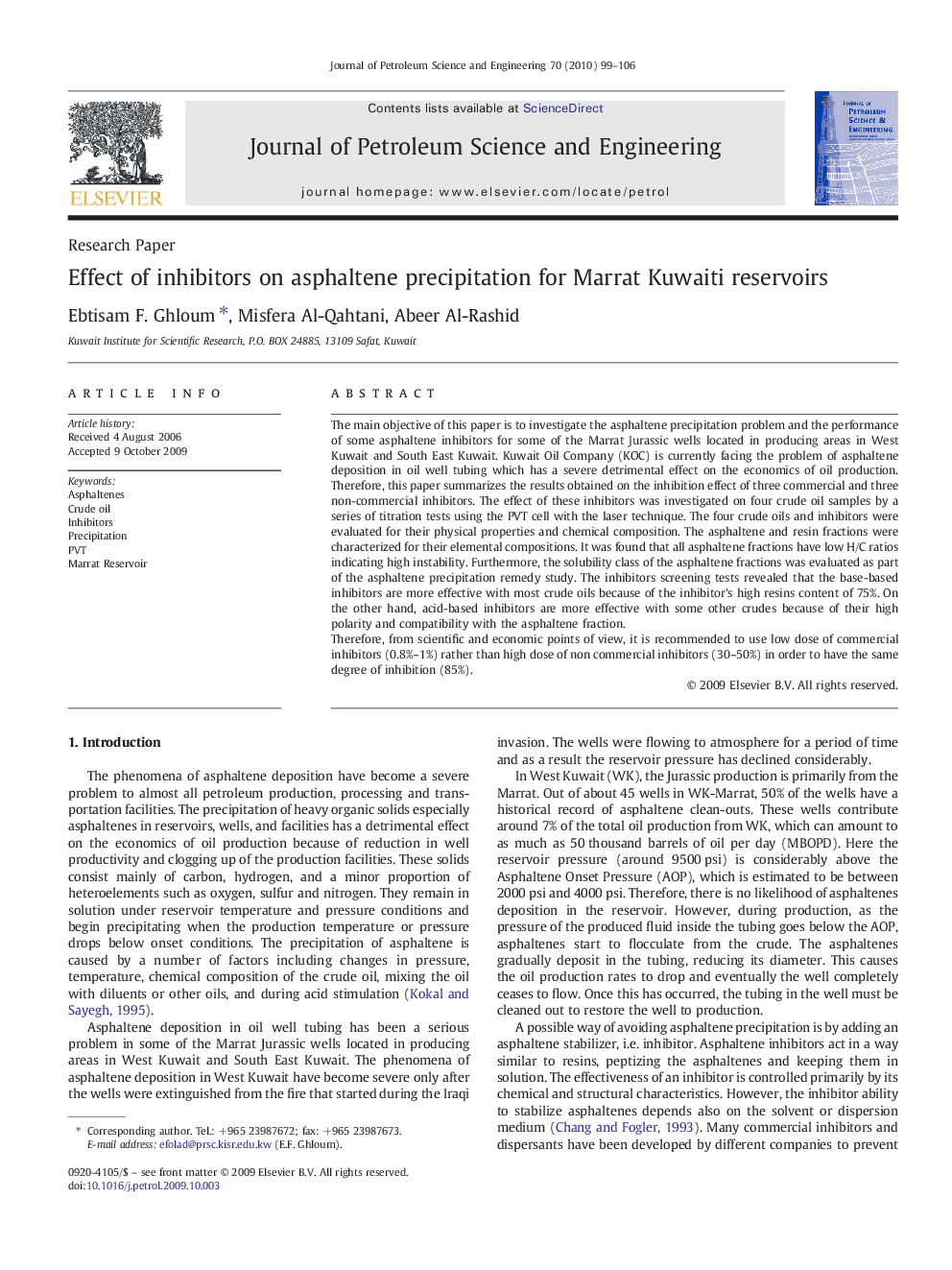| Article ID | Journal | Published Year | Pages | File Type |
|---|---|---|---|---|
| 1756012 | Journal of Petroleum Science and Engineering | 2010 | 8 Pages |
The main objective of this paper is to investigate the asphaltene precipitation problem and the performance of some asphaltene inhibitors for some of the Marrat Jurassic wells located in producing areas in West Kuwait and South East Kuwait. Kuwait Oil Company (KOC) is currently facing the problem of asphaltene deposition in oil well tubing which has a severe detrimental effect on the economics of oil production. Therefore, this paper summarizes the results obtained on the inhibition effect of three commercial and three non-commercial inhibitors. The effect of these inhibitors was investigated on four crude oil samples by a series of titration tests using the PVT cell with the laser technique. The four crude oils and inhibitors were evaluated for their physical properties and chemical composition. The asphaltene and resin fractions were characterized for their elemental compositions. It was found that all asphaltene fractions have low H/C ratios indicating high instability. Furthermore, the solubility class of the asphaltene fractions was evaluated as part of the asphaltene precipitation remedy study. The inhibitors screening tests revealed that the base-based inhibitors are more effective with most crude oils because of the inhibitor's high resins content of 75%. On the other hand, acid-based inhibitors are more effective with some other crudes because of their high polarity and compatibility with the asphaltene fraction.Therefore, from scientific and economic points of view, it is recommended to use low dose of commercial inhibitors (0.8%–1%) rather than high dose of non commercial inhibitors (30–50%) in order to have the same degree of inhibition (85%).
